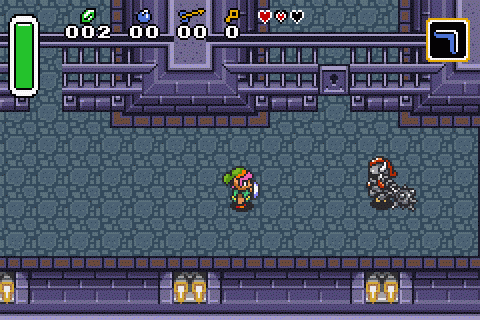Retro Review – The Legend of Zelda: A Link to the Past
Written by Ben Vollmer
The Legend of Zelda is largely a tale of time and space. The most recent entry, Breath of the Wild, in large part, is a commentary on this. Zelda disappears and Link sets out to save her, and Hyrule as a whole. During this adventure, time and space gets shifted back and forth, creating a distortion of reality.
A Link to the Past is the callous root to this convention. It’s hard to believe that it began as a workaround to memory limitations. Hyrule acts as a single space (a remarkably large space, given the 1991 release date) that’s doubled down by shifting the space into something darker, and more importantly, different. At the midway point of the game, you’re shifted into an alternate timeline that involves the exact same space in terms of space. In a stroke of genius, Nintendo has a game that acts twice the size it really is. The darker space, referred to as the “Dark World”, features NPC’s further along in their respective lives, aged terrain and new, more difficult dungeons.

The overworld of A Link to the Past is a thing of retro beauty. Not only is it remarkable what Nintendo was able to do with such a limited space, it actually feels like a living world. This is solidified by quirky sidequests that involved NPC’s who you’ve interacted with on two separate timelines. Most of their lives have been worsened by Ganon’s reign over Hyrule, and having characters outside of Link interact in the same world feels very new age.
Perhaps the best thing about A Link to the Past is the sheer vagueness of it all. Much like the original Zelda, Link is handed a sword and put on a path to save Hyrule. Outside of that, you’re given free reign over when and where you want to do things. In the corner of the world, King Zora will award you with a tool that allows you to transverse other areas of the map. In a different corner of the world, an old man longs to hear the tune of an old flute that allows you to fast travel through Hyrule. Many of these tools aren’t essential to completing the game, but they serve as tremendous rewards for exploration.

A Link to the Past manages distinct looking areas, especially across the two worlds. The “Light World” functions as a colorful and bright territory, while the “Dark World” feels more drab and hopeless. It’s nice, then, that you spend most of your time in the Light World. In large part, Light World feels less blocked off and non-linear, while Dark World requires a few dungeon items to get from one place to the next. The game makes it easy enough to go back and forth (and even uses it as a mechanic on more than one occasion), so you never feel “stuck”.
The game’s combat is a significant step up from the original Zelda, introducing diagonal movement and swings. Like the original, the game is littered with tough enemies. Fortunately, everything is a touch slower and more calculated, making it easy to predict enemies the more times you come across them. The enemy variety is phenomenal, with dozens of different combatants spread across Hyrule. It helps that the controls (played on Wii U) were incredibly responsive, making it easy to time your attacks against enemies that took a little more effort.
It’s also the series’ first real attempt at a narrative, and while it’s far from the franchise’s strongest, it manages to feel just epic and vast enough to fit well within the sprawling landscape of Hyrule. The game’s best writing lies in little moments with NPC’s, particularly ones who have little association with the main quest line. These bits of dialogue feel much more personal, further entrenching Link with the people of Hyrule.

A Link to the Past has few flaws, but the biggest of which lies in the inconsistent pacing within dungeons. There will be areas that eat at nearly all of your hearts in the blink of an eye, areas that will have you redo entire puzzles, and dungeons that will require specific items (without any real warning as to which) that you don’t figure out until right at the end. Having to redo several rooms can be a headache, especially when those rooms make the otherwise easy boss fights a nightmare via severe health loss. With that being said, being even moderately prepared pre-dungeon is usually more than enough to survive on one or two attempts.
Perhaps most amazing of all is how well A Link to the Past has aged. Perhaps its the fact that the game is just oozing with influence, with several mechanics – including the dungeon crafting, music, art design and combat – still being used in a modern setting. Without any nostalgia to go with it, The Legend of Zelda: A Link to the Past stands as an all-time classic, breaking the concept of time and age — just as the franchise always has.
Score: 9.0
Rank: #20
Price: $7.99 USD
Worth the Price: Yes
